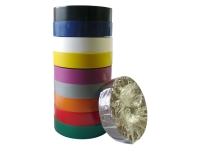Safety Supplies
Solutions to Minimize Potential Risks to Pedestrians & Property
Additional Information
Industrial Safety: How to Keep Your Business Safe and Efficient
In 2017, over 5,000 workers died on the job. That's more than 14 deaths a day.
1 in 5 of those worker deaths was in construction. Some of the most common injury causes are falls, workers struck by objects, and electrocutions.
The National Safety Council confirms that every 7 seconds, a worker's injured while on the job. That's over 12,000 injuries every day.
The best way to prevent injuries and fatalities is to follow industrial safety procedures. The key is for employers to fix workplace hazards before their workers get hurt.
There are dramatic decreases in injuries and illnesses when those companies opt to participate in OSHA's cooperative programs.
For a detailed guide on how to keep your business safe and efficient, keep reading!
What Are Some Aspects of Industrial Safety?
Most injuries and fatalities could have have been prevented. In industrial jobs, safety rules and procedures are vital for maintaining a safe space for employers and their employees.
From fires to chemical hazards to equipment failure, there are so many things that could go wrong in an industrial workplace. That's why safety rules and regulations are so important.
Plus, not only are injuries detrimental for workers and their families, but they also affect the workplace as a whole.
Chemical hazards can decrease production output, for example. As a result, shipping schedules get delayed. Those delays trickle down to fulfillment, vendor relationships, and customer satisfaction.
Proper industrial safety is the most effective way to ensure a smooth-running operation, and one that has the best interests of workers, customers, and vendors at heart.
Industrial safety at your workplace should be in place to prevent poor ergonomics and workplace hazards so that business can continue as usual, and everyone is as safe as possible.
Here are all the ways in which to make sure your industrial workspace is as safe as possible.
Provide Personal Protective Equipment
Industrial gear is crucial in keeping workers safe on the job.
Foot Protection
Construction workers should always wear work boots or shoes with slip-resistant and puncture-resistant soles.
Plus, their footwear should be safety-toed to prevent crushed toes and foot injuries while working around falling objects or heavy equipment.
Eye and Face Protection
Eye and face protection are crucial industrial gear to wear. Workers must wear face shields or safety glasses anytime work operations can cause foreign objects to get in the eye. Welding, grinding, cutting, and nailing are all jobs that require eye protection.
You must select eye and face protectors for your employees based on anticipated hazards.
Anytime there is potential for exposure to electrical hazards, safety glasses or face shields must be worn.
Hand Protection
Gloves should always fit snuggly. Plus, workers should wear the right gloves for the job.
For example, welding gloves must be worn for welding, insulated gloves and sleeves must be worn when exposed to electrical hazards, and heavy-duty rubber gloves must be worn for concrete work.
Head Protection Gear
Head protection is arguably the most vital industrial gear to wear. An industrial helmet can save your life in the event of a slip or a falling object.
Anytime there is potential for falling objects, bumps to the head, or accidental head contact with electrical hazards, an industrial helmet MUST be worn.
Plus, those hard hats must be routinely inspected and maintained and should be replaced whenever necessary.
Take Advantage of Industrial Signage
When most people think about industrial signage, they probably think of signs that say "Caution" or "Warning."
But those signs are only 1 of 3 different hazard levels of safety signs in the industrial workplace.
Taking advantage of and using appropriate signage is one of the surest ways to keep your site safe.
Danger, Warning, and Caution Signs
Danger signs indicate immediate hazards. Those hazards will result in either injury or death, if not avoided.
Warning signs indicate a hazard level that falls somewhere between danger and caution. They show a risk that could result in serious injury if not avoided.
Caution signs actually represent the lowest hazard level. They indicate potentially hazardous situations that may result in minor to moderate injury.
Other Industrial Signs
Biological hazard signs are used to indicate the actual or potential presence of a biohazard. They can identify tools or an area that could be contaminated.
Notice signs and general safety signs are vital because they communicate general information relevant to a building area, equipment, or a machine.
They also communicate and remind workers of essential safety procedures and instructions, like rules and practices for first aid, housekeeping, sanitation, and medical equipment.
Fire safety signs mark the location of emergency equipment, should life-saving be required in the event of a crisis.
In addition to the many types of safety signs we've mentioned, there are also:
- Admittance signs
- Safety symbols
- Surround shapes
Plus, some situations warrant reflective or luminescent safety signs for greater visibility.
Don't Slack on Employee Training
Trained employees are informed, employees. Keeping up with training requirements can be a full-time job, but that doesn't make it any less important.
Training is an investment. It should be prioritized not only for new employees but for "seasoned" ones as well.
Many employees don't take training as seriously as they should. Some deem it as a necessary part of the job but not necessarily as a value-added task.
When it comes to long-time employees, they are more likely to go through the motions of training rather than to absorb and apply what they learn. That's just because they're used to doing tasks a certain way.
Training should be approached with care and should be interactive. It's one of the absolute best ways to ensure industrial safety.
Be Mindful of Ergonomic Hazards
A lot of industrial production jobs require repetitive motions that don't allow for variation. When workers perform the same tasks for hours on end, it puts them at risk for developing work-related injuries.
Unfortunately, the motions of manufacturing jobs are largely unchangeable. Often, there is little that can be done to limit bending, stooping, twisting, lifting, and reaching.
To combat this, workers should take frequent breaks or use protective gear like back braces.
Workers should be treated with care and attention, so they feel valued and provided for. Providing proper equipment or allowing sufficient breaks may seem like it takes away from production, but could end up preventing injuries down the road.
Install Proper Lighting and Surveillance
In industrial production, there isn't always proper lighting. The best light should be used for every situation to ensure workers can see and use equipment properly.
Surveillance encourages employees to follow proper safety procedures and rules. Plus, it's great to have in the event of an accident. Especially in construction or drilling sites, hazards come up quickly, and it can be hard to pinpoint the source or how something happened.
Surveillance can provide extra safety and be used to revisit incidents to figure out how to prevent them in the future.
Get the Right Equipment
Misusing equipment and tools is one of the leading causes of workplace injuries. Plus, not having the right equipment is one of the biggest mistakes for industrial employers to avoid.
Equipment should be regularly cleaned and inspected to ensure it's safe and effective.
Honorable Mentions for Industrial Safety
Chemicals and other hazardous materials should always be stored correctly and in the right containers.
Scaffolding should always be rigid, sound, and sufficient to carry its own weight. In addition, it should be able to take 4 times the maximum intended load without displacement or settling.
It must also always be erected on solid footing.
Safety equipment like traffic control equipment, barriers and barricades, and facility protection should never be overlooked. While these pieces of equipment don't necessarily provide the necessary function for daily work and efficiency, they are absolutely necessary for maintaining a safe workspace.
Don't Hold Back on Industrial Safety
There are thousands of injuries a day, and thousands of deaths every year as it pertains to industrial jobs.
Not only is industrial safety vital for the livelihood of workers, but it's also crucial for the means of production.
When an employer slacks on things like training, equipment maintenance, and proper signage, only the worst can happen. But with so many accidents that could have been avoided, why not make the necessary changes to ensure a safe and efficient workplace?
We are here to serve all of your wire management needs, amongst many other industrial supplies, equipment, and gear. Contact us today to find out how we can supply you with the tools you need to maintain industrial safety.
Cable Ties And More distributes a wide assortment of commercial and industrial safety products that are used for traffic warnings and control, crowd control, facility protection, prevention of rolling vehicles, property protection and employee protection from injury and harm. Most of our products are manufactured with the highest quality raw materials and are made in the USA by well-known manufacturers such as JB Safety, RRM Plastics, Andersen, Eagle Manufacturing, Checkers Safety, Roll-A-Ramp, and Ultra-Tech to name a few.


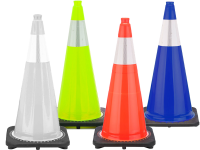
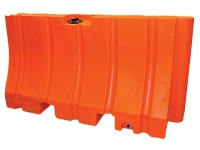
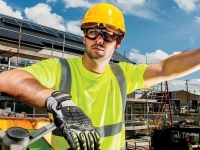
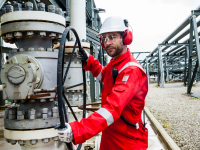
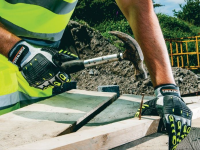
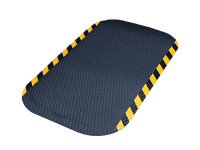
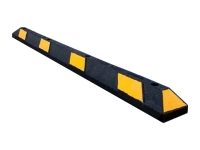
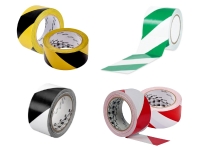
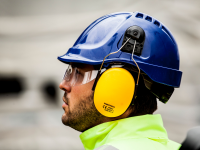
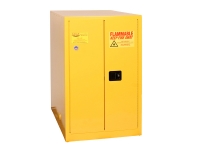
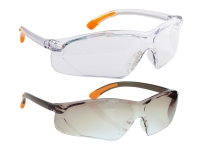
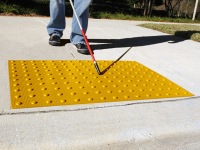

.jpg)
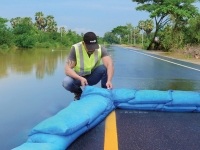
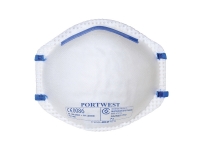
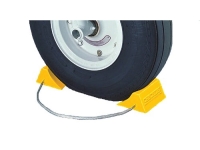
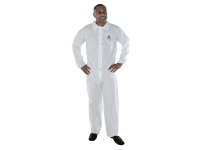
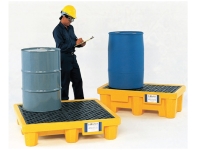
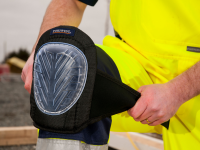
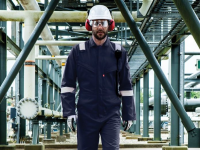
.jpg)

